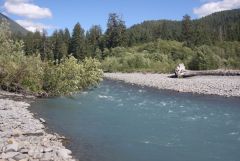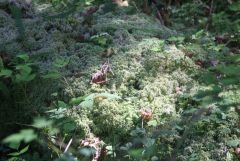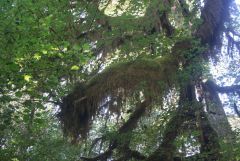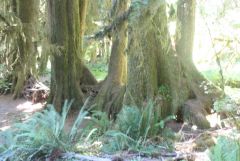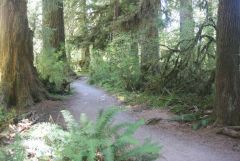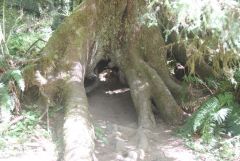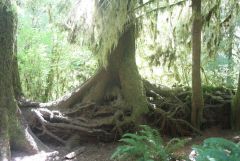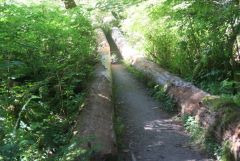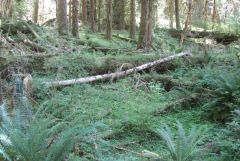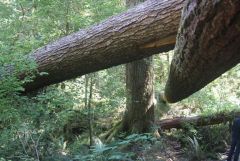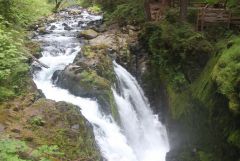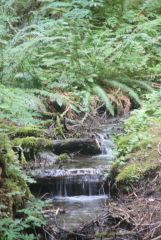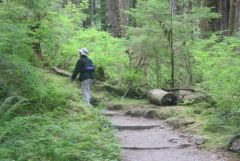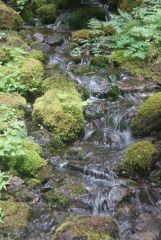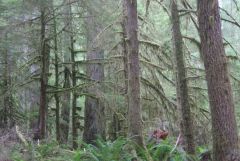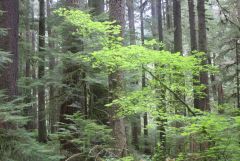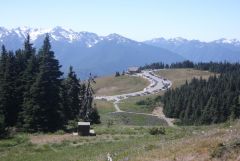-
Content Count
2713 -
Joined
-
Last visited
-
Days Won
44
Content Type
Profiles
Forums
Blogs
Gallery
Everything posted by tbutler
-

Remove Refrigerator From 05 Discovery
tbutler replied to nancydude's topic in Systems and Appliances
I can't speak for the '05 Discovery but there is an option other than the windshield or the door. Our refrigerator changeover went out and in through the drivers side window. That was close but both refrigerators went through that window. It was certainly the simplest solution and worth giving it a try. -
XRailroader, Sorry to hear of your situation. I know what you are talking about. We've had really good parking spots and then we've had some lousy ones. Our first rally was in Hutchinson, KS. We were parked in a field at the state fairgrounds. It rained that year, about 3" during the convention. We had neighbors who were in the middle of a shallow lake for the last three days of the convention. Everyone in our area had to be pulled out. If you attempted to move your rear wheels would sink in up to the axles. It wasn't fun but we enjoyed the convention. So we came back for another. This one was in Redmond, Oregon. We did a pre-rally with Monaco International and decided to join the caravan to the convention. We traveled in groups of 25 coaches separated by about 5 minutes then another 25 coaches went out. Over 300 of us traveling this way. It was quite a sight and we enjoyed the fun of being in such an impressive caravan. Then we got to the parking. The parking which was so smooth at Hutchinson was equally disorganized in Redmond. It took us almost 2 hours from the time we pulled into the convention area until we were parked. I was pretty hot at that point. The convention was great, I learned some good things at the seminars and came away satisfied. Our next convention was in Minneapolis/St. Paul. We pulled into the assembly lot to be taken to our parking site and it was pretty much as you described above. We unhooked the toad, lined up to depart for parking and then departed. It wasn't two miles before my wife called me on the two way radio to let me know that the left rear tire was flat! We had picked up a nail in the assembly lot. I drove on to our parking site. We got one of the best sites we have ever had. We were in the regular RV campground at the state fairgrounds. We had electric as soon as we parked and we had water. There were also showers just a short distance from our parking spot. We had friends that did the caravan to the convention that year, they got a lot that was pretty much like yours. Again another great convention. Our friends who were at their first FMCA convention bought a new coach that year! Our last convention was in Bowling Green, OH. We decided to caravan to the convention with the Monaco International Chapter again. This time we were parked in the time it took us to unhook the car. Smooth as silk. Another great convention. The headline entertainer for the convention was rained out and many people were disappointed. We had a decent parking spot at some distance from the seminars and exhibitors so we used our bicycles to get to/from the convention. My point is that there is a small staff from FMCA that is responsible for organizing everything for the convention. They are assisted by a huge volunteer staff that does the actual grunt work at each convention. Planning is done years in advance. The staff doing the planning may or may not have looked at the actual lot where you were parked. The condition of the lot could be different from when the staff looked at it if they did examine it as that likely would have been several years before the convention. The local organizers who are also volunteers may not have even had specific parking areas identified, only a commitment from the fairgrounds staff that they could provide sufficient parking for a certain number of coaches. I'm sure when the parking volunteers arrived to park coaches on the lot they realized the situation but didn't have time to do anything about it. I'm guessing it would have been necessary to have the lot cleaned by a mechanical sweeper to get the job done in a reasonable amount time and that time or the equipment may not have been available. It's a big operation and there are things that go wrong somewhere in the operation nearly every year. Volunteers do much of the work. Some are experienced and do a wonderful job. Others are way out of their league and botch the job. Unexpected bumps foul up even the best plans. The intentions are good even if the occasional result is less than good. If you come back again, you'll likely get a nice parking spot but something else will be amiss. It is like the rest of RV'ing, you learn to roll with the punches. We enjoy the conventions when we can get to them. Meeting fellow motor homers and learning more about your lifestyle is welcome and the entertainment is always fun. So come back, give it one more try. Don't expect perfection, overlook the flaws, celebrate the benefits and the good times with your fellow FMCA'ers.
-
Skip, You should have emergency fire exits in your motor home. We have one window in the living area, it has two red handles and pulling those up will allow a quick if not graceful exit out a window. We have the same in the bedroom. I check them periodically to ensure they open easily. Everyone should have these in their motor home and knowing where they are and checking them frequently to ensure proper operation should help put them in the front of your mind if there is ever a fire when you are in the motor home. The operation of these windows is one of the first things we do when we travel with our grandchildren in our motor home. They have all opened the window by themselves before we start any trip with them. We have also had door latch problems. Ours is simply worn out after 10+ years of full time travel. We are scheduled to have the whole works replaced this month. Last year when the problem surfaced we had the door serviced. The first thing I did when we turned the motor home over to the repair shop was pop one of the fire exit windows open just in case someone got locked in or out. I told the tech who was working on the door latch so he wouldn't panic. No need to break a window if you provide an emergency exit. This of course won't help if you have pets inside and won't allow you to get inside if you haven't opened the fire escape window. It is an important safety feature that could be used when working on a door latch as an alternate means of getting into or out of the coach if the latch becomes completely inoperative while working on it or testing it.
-
I guess we are lucky. As far as I know, there are only three entry points for mice into our motor home storage compartments and/or living area. Those are all associated with the water, sewer and electric. After our first mouse moved in I made collars for the power cord and the sewer pipe. The water hose already had a collar so I didn't change anything. Last summer I had knee surgery, June 2 they replaced the left knee, on July 28 they replaced the right knee. I had failed to put the collars in place before the first surgery and by the time I was mobile enough to tackle installing the collars we had new borders. I installed the collars. Then I had to clean out the basement. Anything that could be used for nesting materials were put in sealed containers. I set traps, multiple traps in each storage compartment. After about two weeks the last of them were gone. We were in a high risk area, edge of the forest, wood pile 50 feet away, I should have installed the collars as I always do. I just wasn't thinking too clearly. Anyway, I am again using the collars and that has taken care of the problem, no mice ever since. We store the motor home next to our house in the winter. The power is on all winter and the collar keeps the mice out. We never have the sewer or water hooked up during the winter so those openings are closed up tight. The fact that I can seal these three openings and have no problems strongly suggests that those are my only three weak points. Now ants are another problem. whenever I notice ants in a campground I'll spread an ant treatment all the way around the motor home with a concentration on the area around the power and utility openings. That has worked so far.
-
Herman, Yes, the old Norcold went out the drivers side window, not much room to spare but it went through. The new refrigerator actually was lighter and slightly smaller in the widest dimension of the cross section so fit easier than the Norcold. I make no special provisions for the icemaker. We use ice from happy hour until bedtime or something like that. This refrigerator makes enough ice overnight that I don't think it is making ice the next morning. If it is, we haven't noticed any problem with it. In fact I have more problems with the GE refrigerator we have at home icing up the ice hopper than we have had with our Whirlpool. To answer a previous question about batteries. I am having no problems whatsoever with the batteries holding up. We still have the standard (for our rig) 4 x 6V battery set-up. We never shut the refrigerator off when traveling or overnight, when we're in the coach it's on 24/7. Everyone's situation will be different, some may need an additional pair of batteries.
-
Ours are stored in the back closet with a single bungee cord around the top of the chairs. I put in eye hooks screwed through the closet wall into a sturdier piece of wood that I put behind the wall. The closet wall I was using separates a column of drawers from the closet so it was easy to take out a drawer and put the backing behind the wall in the space between the drawer and the wall. Then the bungee I used was almost long enough to reach around the chairs and hook into the eye. That way it isn't pulling strongly on the eyes and we haven't had any problem with them pulling out. Our chairs only need something to keep them standing, they are fine with just a light pull from the bungee cord. I stack them so that one is right side up and the one on the outside is up-side-down. They take up less space that way but yours may be different. I have lots of small items that I store beneath the bed so getting the chairs out from under there helps me store other things that couldn't be stacked up in the closet. Besides, my side of the closet doesn't have that many shoes!
-
To reinforce one thing that was mentioned above, ventilation around the unit is very important. Space below the unit is as important as space above. The slots in the bottom of the case must have a free flow of air as they are the input for the air that circulates through the unit. That air will be heated inside the unit and then will escape through the top of the unit. Space above the unit should allow the hot air to disperse and cool naturally but in a small closed cabinet that can't happen. Using a cooling fan and providing a space for incoming fresh air will solve your problem. The factors that Bill points out make the cabinet hotter than normal without the heat of the unit. Ventilation is especially important in that case. We are fortunate that our cabinet doors have a mesh panel which allows a free flow of air as though the cabinet were open all the time. That could be an alternative solution if you were willing to modify your cabinet doors. Cabinets in the front cap of the motor home can also be insulated. We had the insulation installed on the inside of the front cap. The insulation could be installed on the outside of the cabinet instead. Either way, it helps to keep those cabinets cooler.
-
Chuck, Here is an update on cleaning the coils of the new refrigerator. I put this off until we were ready to leave this spring. I was anticipating using my air compressor to blow the dust off the coils and a shop vac to catch the resulting dust storm, much as a shop vac can be hooked up to a power saw to pick up the sawdust coming off the blade. Originally I planned to blow the dust from the outside access into the motor home. After cutting a 2" x 4" door in the cardboard back with an X-acto knife. it became apparent that I would not be able to get air to the entire coil area from that location. I had Louise hold the vacuum hose tool which fit over the door opening and used the pressure air gun from the inside. It cleaned the coils very effectively and the vacuum picked up most if not all the dust. When we were done, I pushed the door back, friction holds it shut and everything is working satisfactorily. So that is how I am cleaning under the refrigerator.
-

Replacing Norcold 1210 with Residential Refrigerator
tbutler replied to PrairieDog1951's topic in Systems and Appliances
I posted an article about 18 months ago which detailed our experience replacing our Norcold 1200. Replacing a Norcold Refrigerator describes the process and has photographs to illustrate that process. I'm not sure how the size of a Norcold 1200 relates to a Norcold 1210 but if the sizes are similar, I have cited the model refrigerator that we now have. I am pleased to say that we have the same battery bank we had before we replaced the refrigerator and we do boondock. We have had no problem going overnight without the generator. Likewise when we drive during the day, not using the generator we also find no problem with our 4 x 6 volt battery bank. Most important, we have a dependable refrigerator and I'm not worried about the hazard of the old 1200. -
Oops! That was my mistake. I should have looked it up before posting. I have corrected it in my comment above. Now it reads .060 and .040 or 60 thousandths and 40 thousandths. Thanks for the correction Brett.
-
Where to get shocks done? We had our first coach outfitted with new shocks at the FMCA Convention in Hutchinson, KS in 2002. We talked to a vendor for Safe-T-Steer and had that installed. He also installed shocks, I knew we needed them and purchased a set from him. He came to our site and put everything on for us right where we were parked. I felt like I had a new coach when we drove away. So shocks are where you find them. Most important with shocks is to get good quality shocks. There are several brands, pick the brand and type you want. I would not advise trying to save money on this purchase. Shocks last a long time if you get a quality set. The shocks on our coach right now are nine years old and still good. Alignment is another matter. That has to be done in a shop. Any truck tire dealer will have an alignment bay that will accommodate your motor home. While it is not purely a matter of numbers, I believe there is a bit of art to doing a good alignment, be sure you have the recommended alignment settings from your chassis manufacturer or motor home manufacturer. Those settings should be in your owners manual. If you don't have them, call technical support for your manufacturer and get the settings from them. Take them with you to the shop and have it aligned per manufacturers specs. With cars you can just take it to a shop and get an alignment, the shop will have the specs for your car. With a motor home you must provide the specs because there are so many models and shops don't have any information on all the models of motor homes. If you don't provide the specs, you may not get an alignment that works best for your motor home. Check with other motor home owners in your area as to who does the best job. I used to look at this as strictly a matter of getting the numbers right but I had an alignment done on my car recently and the man who did the job did the best alignment I've ever had. Maybe it is just a matter of taking the time to tweak the adjustments until they are as close as possible. The specs will give a range for each setting, not a specific setting. The final settings should be within range. The shop should provide you a print out of the settings they achieved. I keep that print out with my owners manual for reference. Balancing is best done when getting new tires or rotating tires. Most any shop can do a good job with balancing. Be sure to get them spin balanced for best results. This is pretty standard at any tire shop. Large tires can be balanced but be out of round. Mounting tires can make a big difference in how round the tires are. I learned this several years ago when I had a set of front tires that were out of round. The were going to shake me apart. I had a good tire shop take a look at them and they showed me how they can test for the roundness of a tire. Sometimes remounting a tire after rotating it around the rim can correct some of this. Most tires will be slightly out of round. I now specify mounting tires and inflating them to bead in a horizontal position. This ensures that the rim will be in the center of the tire. Setting the bead when in a vertical position puts the rim off center to start. When the bead is established it should push the rim to the center but gravity is working against it so the rim will be slightly off center. Once the bead is set then they can put the tire in its safety frame for inflation to full pressure. After that, the tire should be tested for roundness. I specify .060 inch, 60 thousandths of an inch maximum variation from the lowest to highest spot on the tire. I have heard of using .040 inch, 40 thousandths and having the tire dressed to get it that close but I have had to purchase several tires on road trips and dealing with random dealers makes this more difficult. If you can find a good tire shop, make it a point to return there. I don't think you can simply go by a brand. I've always gone to shops that deal in my brand of tires and some are really on top of things and others are definitely not. You will be taking your motor home to a truck shop. They have a completely different standard for trucks and if you let them, they will use that standard for your motor home. Again, talk to local motor home owners to find the best shop for the job.
-

Caravan From Florida To Yellowstone
tbutler replied to Gypsea's question in Destinations/Attractions
Well said Herman. I gave my response some thought overnight and have to add that we have traveled with friends on several trips. It would be a kind of mini-caravan I guess. We do compromise our travel habits on those trips because we enjoy being with our friends. We had a group of three that lasted for about a week before one couple had to return home. The longest we have traveled in tandem is about 3 weeks. So if you want to find someone who is interested in traveling together, posting here is one good way to link up with someone. If you are compatible then plan a short trip together to see how comfortable you are with others. Then go ahead and plan your longer trips. Another way to link up with people for trips is to join a local group and participate in their activities. You will get to know a number of people and form some friendships with motor homers from your area. Then you may find others who like to travel together and be invited to join their group or you may recruit others to form a group for traveling together. I think that friendship is the best platform to build your travel group from. Friends are willing to give and take and a little compromise is worth a lot when you travel together. Friends are also those who will stand by you when you have problems with your rig and have to spend a couple of days getting something repaired. Where do you find a local group? Check out the FMCA list of chapters under the heading chapters/areas on the right side of the menu line on the FMCA home page. You might attend rallies of several groups this fall and see if you find yourself comfortable with one or another. Join one you like or join several, there is no limit on how many chapters you can join. Chapters are good excuses to get the motor home on the road and you will make friends and build the relationships that lead to caravans. -

Caravan From Florida To Yellowstone
tbutler replied to Gypsea's question in Destinations/Attractions
If you have done 1500 mile trips, you can do a 5000 mile trip. The basics are really quite simple. You drive to a destination that interests you, park, enjoy what you want to see then move on. Drive, stop, drive stop, etc. Tired of driving? Take a break and just sit around a park for a few days. Take it one day at a time. It is difficult to put together a caravan because you have to have people who have similar interests and who want to travel at the same rate. People do it on a commercial basis for trips that are notoriously difficult such as Alaska, Mexico and a few other places. Sometimes RV clubs will travel together to a specific venue such as a NASCAR race or the Balloon Festival in Albuquerque, NM. We have avoided traveling with caravans because we prefer to make our own decisions about where to go and how long to spend in a given place. We have been in the Olympic Peninsula for just over a month. We just decided to extend our stay in Forks because there are still things to see in this area. When we leave here we'll continue on toward our next destination in California. We don't know exactly what route we will follow. When we get started we'll make decisions each step along the way. Some people plan their trips and reserve parks all along the way. We travel without reservations. We don't like having a schedule we have to follow. Sometimes we leave in the morning with a definite destination in mind. As we travel and get close to our destination we will call ahead to a park of our choice to see if space is available. We have seldom been told no. If we don't get close to our destination, we will pick an alternate overnight location, sometimes a park, sometimes we boondock at Wal-Mart or another location. That way if we decide to stop along the way to explore a point of interest we hadn't anticipated we don't have to rush on to get to a park where we have reservations. We spent a month in British Columbia on the way to Alaska because we found British Columbia so interesting. This is why we don't caravan. -

Signs of Recovery on the Road
tbutler commented on tbutler's blog entry in Tom and Louise on Tour in North America
Sorry to hear that, the Olympic Peninsula is really cooking. We're seeing a constant flow of motor homes and other RV's going by on the road and campgrounds are busy, not full but far better than a few years ago. The same goes for the west in general. We've been from Texas through Missouri and on to South Dakota, Wyoming, Montana, Idaho and now Washington. I'm seeing many more motor homes than in past years. Diesel is going for $4.14 at our last fill-up in Port Angeles, WA. I'd rather pay $3.90 or less but it is what it is and it seems a lot of other people are deciding the same thing. Hope things get better for you soon. After all, we're all in the same boat.- 2 comments
-
- Washington
- Travel
- (and 8 more)
-
So how did he get them out? What problems did he have? I've got a pair that are going to be replaced soon. Where was your warehouse supply store? I've seen the kits. I had ours professionally refinished at the FMCA Convention in Bowling Green, OH and they are much better but are clouding again. The person who did a wonderful job from what they were said that the do-it-yourself kits will make any further rehabilitation impossible. She worked for three hours using polishing rouge and a buffer to get them cleaned up. She said she wouldn't even attempt to do lenses which had been done with the DIY kits. I had my toad headlights done last year in Texas. The person who did that job also used the same technique as the woman who did the job in Bowling Green, OH. Either they all use the same line or the DIY kits are a fix that will prevent any further work on the lenses. In both cases, the job took a great deal of patience but made significant improvements. Our headlights are 10 years old on the toad and 8 years old on the coach.
-
I just thought of one more possibility. Our coach routes the condensation water from the air conditioners to a tube which runs inside the ceiling, down the post beside the windshield (for the front AC) and under the coach so we normally don't have water dripping on the roof and running down the side of the coach. When ours clogs up it starts to run across the roof and I have to go clean the drain. If yours is similar and there is a way for that water to leak inside, perhaps the water could have been condensation from the AC. You may not notice the problem in the normally dry air of Las Vegas but with higher moisture it may have shown up.
-
How much water leaked in? We had water dripping on the dash of our coach when we first received it. That was associated with cold weather when the outside shell of the front cap was cold. We determined that the water was condensation which would then drip onto the dash. The quantity was never large. We had the front cap above the cabinets insulated, problem solved. That said, your situation doesn't sound like it would be a condensation problem. I mention our solution only because of the similarity in the location where the problem occurred. In your case, with the air conditioners on, the inside air should have been dry enough to prevent condensation. I addition, Las Vegas doesn't get cold enough to cause condensation and of course the air in Las Vegas is normally quite dry, I suspect even in a driving rain the humidity in Las Vegas is probably 20% . I do know that a roof leak can travel a long distance before it finds a route into the motor home. We had a leak from the large awning which would drip from the front air conditioner. Once we got it sealed well we had no more problems. Happy hunting!
-
I have attended a number of conventions, not only RV conventions but others as well. It is customary and well published in all convention programs I am familiar with that the first attendance day is without vendors as they are busy setting up their displays. I am sorry for the confusion and agree that there should be special mention of the vendor schedule in any convention publicity. By the way, the best day to see the vendors is the last day of the convention. While their wares may be depleted, some vendors, especially those with large materials to haul or ship home will be anxious to make a deal to save the cost and effort involved in hauling their inventory back home. So you may be better off shooting for the last or second to last day to see the vendors if you only have one day. I always make it a practice to visit the vendors on the last day to see what special deals they are offering.
-
-
From the album: Olympic National Park
A final look at the Hoh River on our way out of the park. We are staying at campgrounds outside Olympic National Park as our motor home is too large for any of the campgrounds. We make regular trips into the park to explore those areas accessible by road. The campgrounds in the park don't have full hookups and without sewer, we would have to move more frequently. We are happy being outside the park and staying in one location for a week or two. Extended stays give us time to take care of housekeeping as well as exploring at a more relaxed pace. We also get to know the communities around the parks where we stay.© @TBUTLER
-
From the album: Olympic National Park
Here a close up shows some of the many kinds of moss that grow in the rainforest of Olympic National Park. These are growing on a log on the forest floor. You can not see much of the log in the picture as every possible surface is covered with moss. Temperatures seldom freeze here and there is plenty of moisture. Plants thrive in this environment.© @TBUTLER
-
From the album: Olympic National Park
In the temperate rainforest of Olympic National Park, tree limbs are smothered with mosses. The moss does not harm the tree. It gets its water from the rain and humidity in the air. It manufactures the food it needs with chlorophyll. Mosses are adapted to growing in low light environments and thrive in the understory branches and the forest floor.© @TBUTLER
-
From the album: Olympic National Park
Examine this picture and you will notice that these trees are all in a line. The line was formed when a tree fell. The rotting log provided a place for these trees to sprout. Now the log is gone but the row of trees remain in silent tribute to the nurse log that fostered their growth. This is reminiscent of fence rows in the midwest where I was raised. Birds sitting of a fence would drop seeds of trees, cedars were common. These would sprout under the fence and grow up along the fence line. On many an abandoned farm you can still see the rows of cedar trees all planted in a row by birds sitting on a fence which is now rusted and gone.© @TBUTLER
-
From the album: Olympic National Park
Here a few trees stand all alone. This allows me to take a single picture that shows a whole tree, or most of it anyway. These trees are second growth trees, not the old growth seen in much of Olympic National Park. Old growth Douglas fir trees grow to diameters of 5 to 6 feet and stand as tall as 300 feet.© @TBUTLER
-
From the album: Olympic National Park
This is another look at the forest trail. The camera captures such a small area of this magnificent panorama. I would often pause and look up as the view above was always amazing. The trees tower above us spreading their branches at the very top of the tree. Most of the lower branches fall away as they die when they are shaded by higher branches and neighboring trees. Where sunlight penetrates to the forest floor, a lush understory develops. This will be winter feed for the large elk herd that resides here. During the summer the elk are at higher elevations in the interior of the park. When winter comes, the herd descends to lower elevations. Some towns have problems with elk browsing shrubbery in residential neighborhoods in winter. By spring the elk have cleared the forest floor of most of the smaller plants. Abundant rain will allow new growth to replace the heavily browsed forest floor before the elk return the next fall.© @TBUTLER


